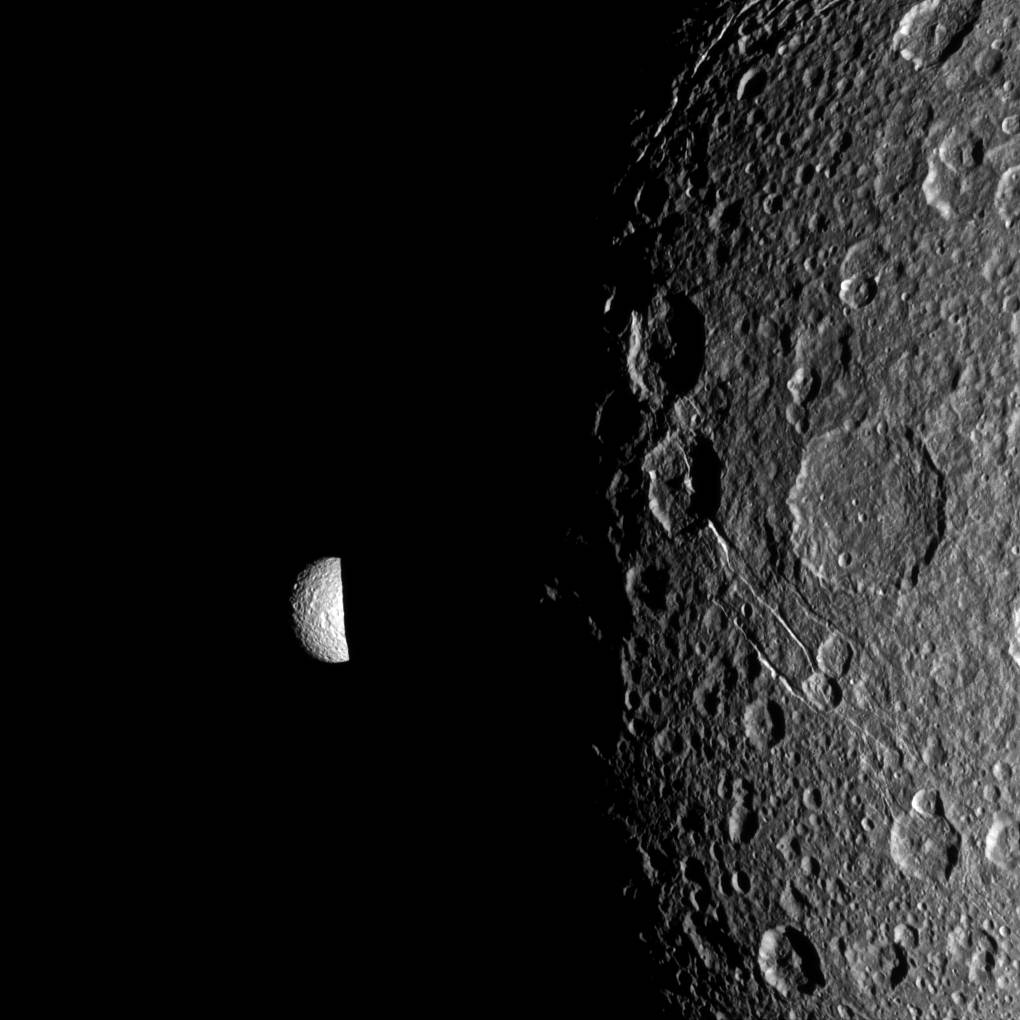Saturn’s moon Mimas peeks out from behind the night side of the larger moon Dione in this Cassini image captured during the spacecraft’s Dec. 12, 2011, flyby of Dione.
Dione is 698 miles, or 1,123 kilometers, across and its day side dominates the view on the right of the image. Smaller Mimas is on the left and measures 246 miles, or 396 kilometers, across.
Lit terrain seen here is on the Saturn-facing side of Mimas and in the area between the trailing hemisphere and anti-Saturn side of Dione. North on the moons is up and rotated 20 degrees to the right.
The image was taken in visible light with the Cassini spacecraft narrow-angle camera. The view was obtained at a distance of approximately 58,000 miles (94,000 kilometers) from Dione and at a Sun-Dione-spacecraft, or phase, angle of 42 degrees. Image scale is 1,833 feet (559 meters) per pixel on Dione. The view was obtained at a distance of approximately 380,000 miles (611,000 kilometers) from Mimas and at a Sun-Mimas-spacecraft, or phase, angle of 41 degrees. Image scale is 2 miles (3 kilometers) per pixel on Mimas.
The Cassini-Huygens mission is a cooperative project of NASA, the European Space Agency and the Italian Space Agency. The Jet Propulsion Laboratory, a division of the California Institute of Technology in Pasadena, manages the mission for NASA’s Science Mission Directorate, Washington, D.C. The Cassini orbiter and its two onboard cameras were designed, developed and assembled at JPL. The imaging operations center is based at the Space Science Institute in Boulder, Colo.
For more information about the Cassini-Huygens mission visit https://www.nasa.gov/cassini and http://saturn.jpl.nasa.gov . The Cassini imaging team homepage is at http://ciclops.org
Image credit: NASA/JPL-Caltech/Space Science Institute› Dione’s image gallery
2 min read



























